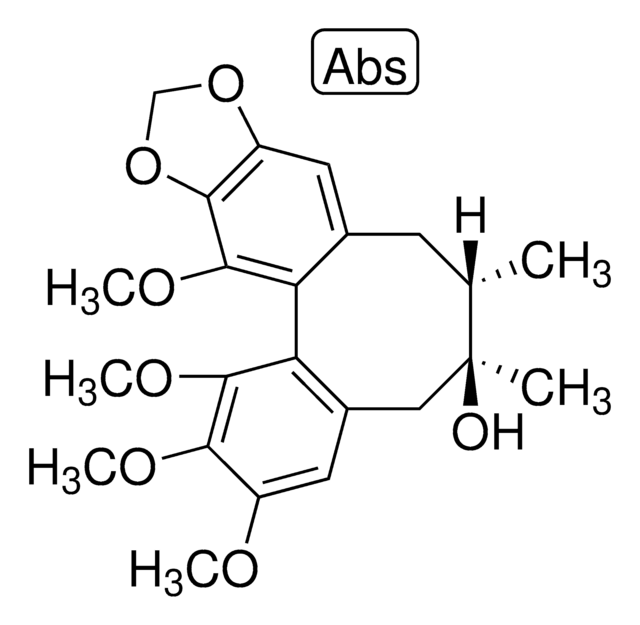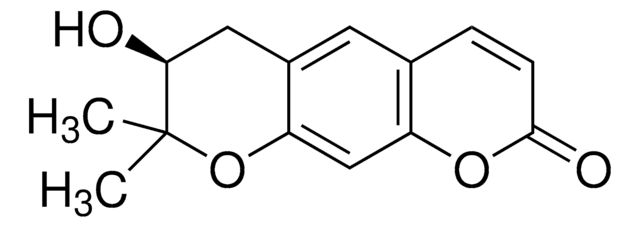SML0786
Decursin
≥97% (HPLC)
Synonym(s):
(+)-Decursin, (7S)-7,8-Dihydro-8,8-dimethyl-2-oxo-2H,6H-benzo[1,2-b:5,4-b′]dipyran-7-yl 3-methyl-2-butenoate, 3-Methyl-2-butenoic acid (7S)-7,8-dihydro-8,8-dimethyl-2-oxo-2H,6H-pyrano[3,2-g]-1-benzopyran-7-yl ester
About This Item
Recommended Products
biological source
Radix peucedani
Quality Level
assay
≥97% (HPLC)
form
powder
optical activity
[α]/D +120 to +160°, c = 0.5 in chloroform-d
color
white to beige
solubility
DMSO: 5 mg/mL, clear
shipped in
wet ice
storage temp.
−20°C
SMILES string
[o]1c2c(cc3c(c2)OC([C@H](C3)OC(=O)C=C(C)C)(C)C)cc[c]1=O
InChI
1S/C19H20O5/c1-11(2)7-18(21)23-16-9-13-8-12-5-6-17(20)22-14(12)10-15(13)24-19(16,3)4/h5-8,10,16H,9H2,1-4H3/t16-/m0/s1
InChI key
CUKSFECWKQBVED-INIZCTEOSA-N
Looking for similar products? Visit Product Comparison Guide
Biochem/physiol Actions
Features and Benefits
Storage Class
11 - Combustible Solids
wgk_germany
WGK 3
flash_point_f
Not applicable
flash_point_c
Not applicable
Choose from one of the most recent versions:
Already Own This Product?
Find documentation for the products that you have recently purchased in the Document Library.
Articles
We offers many products related to Nuclear Receptors (Steroids) for your research needs.
Related Content
DISCOVER Bioactive Small Molecules for Nitric Oxide & Cell Stress Research
Our team of scientists has experience in all areas of research including Life Science, Material Science, Chemical Synthesis, Chromatography, Analytical and many others.
Contact Technical Service







